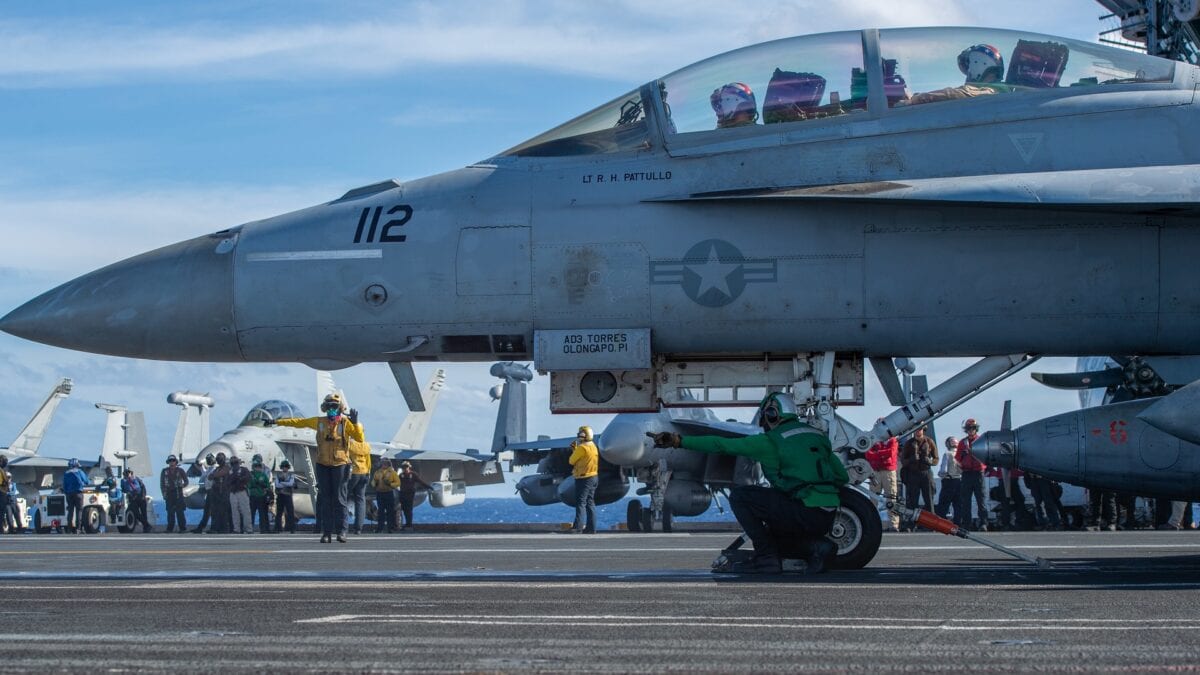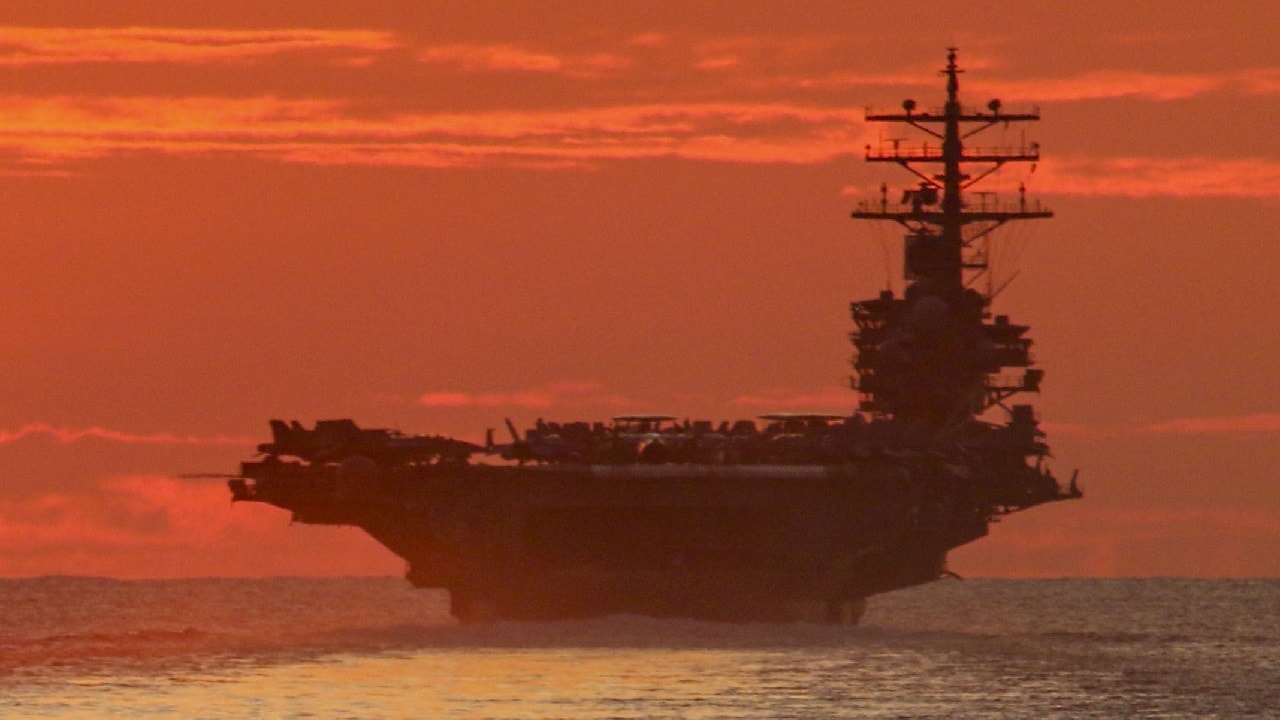America’s Aircraft Carrier Problem – Conflict with China over Taiwan is becoming increasingly likely as the decade progresses.
The Americans are (at least on paper) committed to Taiwan’s independence for geopolitical and moral reasons. At the same time, the Chinese Communist Party (CCP) is obsessed with making Taiwan part of China for ideological as well as geopolitical reasons.
Beijing believes that Washington is weak and growing weaker as time progresses. Washington thinks it has no choice but to risk conflict now because China is getting stronger.
Should a war with China erupt over Taiwan, the United States Navy will be at the tip of the spear against China.
For China, their People’s Liberation Army Navy (PLAN) will also be at the front of any invasion, helping to ferry Chinese troops to Taiwan across the Taiwan Strait. It is also believed that the United States Air Force and the United States Marine Corps. will be critical for any American defense of Taiwan. This was the essence of the Obama era “Air-Sea Battle” concept.
Blockading China Means Prioritizing Submarines
Even if the Americans don’t risk direct warfare with China over Taiwan, another possible strategy that Washington may employ would be what’s known as a “Offshore Control.” This is a concept that has been floated around for a decade. Because China must import a vast quantity of critical supplies (and because so much of China’s economy is export driven), Washington thinks it can use its Navy to blockade key shipping lanes far beyond the reach of the PLAN.
By implementing a blockade meant to strangulate China’s economy, Washington’s policymakers think that they could slow down—or stop—a Chinese invasion of Taiwan because China’s leaders must keep their economy moving.
A blockade would risk the health of China’s economy. Yet, under international law, a blockade is an act of war. And China has spent many years building their capabilities to counter the US Navy in regions of the Pacific Ocean as well as the South and East China Seas that they believe to be their sovereign territorial waters.
Specifically, Beijing has built a sizable force of DF-21D missile launchers and spread them at forward-deployed positions across the region—notably on China’s manmade islands in the South China Sea. These weapons are more ominously known in the media as “Carrier Killers.” They are specifically designed to track and destroy America’s massive aircraft carriers.
Beijing knows that American aircraft carriers are the backbone of the US Navy fleet. They are the ultimate form of power projection.
These city-sized, floating airbases are, unfortunately, poorly defended against China’s Carrier Killer missiles. Given the number of sailors that serve aboard aircraft carriers and the cost involved in building and maintaining these marvels of military engineering, Beijing understands that losing even one of these great warships would stop the Americans dead-in-their-tracks.
China believes that any delay in US military support for Taiwan during an invasion scenario would provide for China’s invasion force the kind of window of opportunity it needed to defeat Taiwan’s defenses and complete their annexation of the island as planned.
That is why the standard US military plan for responding to threats from China in the Indo-Pacific with the presence of aircraft carriers is silly.
Just as naval battles in the Second World War were not dominated by the vaunted battleships of the day but instead by the aircraft carrier, the naval conflicts in any war with China will not be defined by the aircraft carrier.
Instead, those naval engagements will be led by the submarine.
If that is the case, then, Washington had better embrace a serious industrial policy because the United States simply lacks a sufficient number of submarines in its fleet to both fight any potential war with China and still meet its other obligations in other regions of the world.
The US Navy Must Make Submarines the Priority
The fact is, the Navy has not reorganized itself to prioritize the submarine over the aircraft carrier. This happened with the battleship and aircraft carrier debate in the Interwar Years. Back then, the Navy preferred battleships to flat tops.
This was partly because of the culture of the Navy at the time and because the aircraft carrier was seen as a bit of a fluke. It wasn’t until the Japanese attack on Pearl Harbor happened and America lost the bulk of its battleships that it needed to prioritize what it had left: aircraft carriers.
Similarly, Washington won’t prioritize its submersibles until it loses at least one aircraft carrier in battle with China—which is going to happen once hostilities commence.
More troublingly, from a strategic perspective would be if Washington, realizing it has placed too much emphasis on the aircraft carrier and that China’s DF-21 could sink any aircraft carrier deployed to respond to a Chinese invasion of Taiwan, might stay its hand or hold back.

221227-N-DU622-1227 PHILIPPINE SEA (Dec. 27, 2022) An F/A-18F Super Hornet from the “Fighting Redcocks” of Strike Fighter Squadron (VFA) 22 prepares to launch from the flight deck of the aircraft carrier USS Nimitz (CVN 68). Nimitz is in 7th fleet conducting routine operations. 7th Fleet is the U.S. Navy’s largest forward-deployed numbered fleet, and routinely interacts and operates with 35 maritime nations in preserving a free and open Indo-Pacific region. (U.S. Navy photo by Mass Communication Specialist 2nd Class Justin McTaggart)
The time is now for radical changes to be made to America’s defense posture. In the case of the Indo-Pacific, the Navy must be allowed to develop effective strategies for placing the submarine at the forefront of its war plans. Submersibles deployed to the Indo-Pacific could launch devastating harassment attacks on any potential invasion force traversing the Taiwan Strait. They could even possibly attack mainland China if necessary.
Submarines could be used for covert monitoring of Chinese fleet movements in the area. What’s more, they could covertly land small numbers of troops and weapons supplies to the defenders in Taiwan. Submarines could even eventually be adapted to launch drones which could serve as a vital force multiplier for the defenders in Taiwan.
The days of the aircraft carrier being the leader in any naval conflict, though, are over—at least in the Indo-Pacific. The Silent Service must be given its due as we enter into a possible war with China.
A 19FortyFive Senior Editor, Brandon J. Weichert is a former Congressional staffer and geopolitical analyst who is a contributor at The Washington Times, as well as at American Greatness and the Asia Times. He is the author of Winning Space: How America Remains a Superpower (Republic Book Publishers), Biohacked: China’s Race to Control Life (May 16), and The Shadow War: Iran’s Quest for Supremacy (July 23). Weichert can be followed via Twitter @WeTheBrandon.
From 19FortyFive
The Second American Civil War Has Begun

